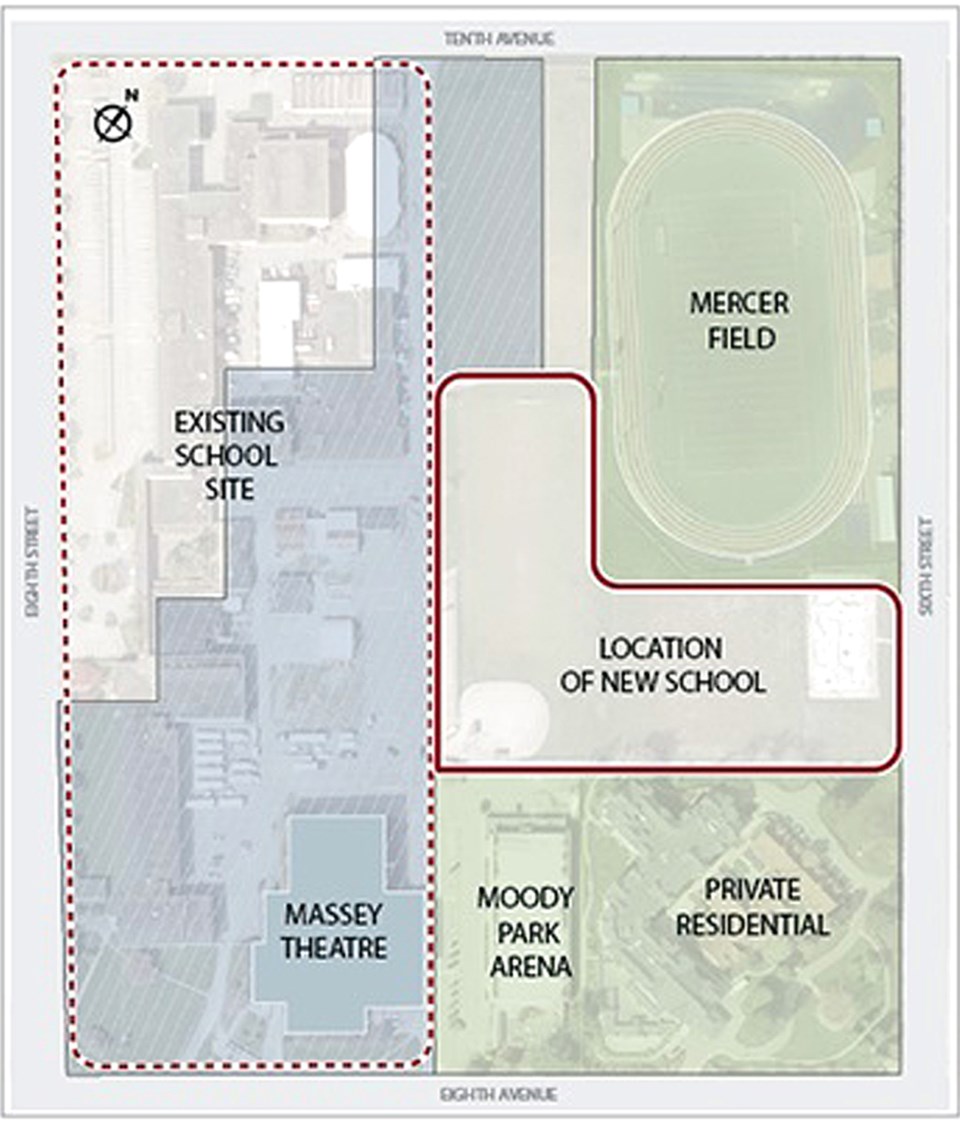The school district has laid to rest the question of where on the New Westminster Secondary School site the new high school will be built.
The school district announced last week the archeological investigation of the secondary school site was complete, and the subsequent report confirmed there are no burial sites within the proposed building location.
“That was the area we thought was going to work, and it’s come back that that area is clear. We could find no evidence at all of any burial sites in that location that we had chosen,” Pat Duncan, superintendent of the New Westminster school district, told the Record.
A map of the secondary school site shows the proposed location of the new high school is an L-shaped area that runs behind the existing school, north of Moody Park Arena and east to Sixth Street (over Mercer skatepark).
The current secondary school was built over a public cemetery, known as Douglas Road Cemetery. The cemetery was used between 1860 and 1920 as the final resting place for the bodies of the poor, prisoners, stillborn babies and mentally ill patients from Woodlands and Essondale – which later became Riverview. The land was also used by Chinese, Sikh and First Nations communities to bury their dead.
The site includes two designated areas:
- The Heritage Conservation Act area, which includes the land between the existing school and Mercer Stadium from 10th Avenue to Eighth Avenue, the south corner of the site at Eighth Street and Eighth Avenue, and Massey Theatre.
- The official cemetery land, which runs from 10th Avenue and Eighth Street to Dublin Street and makes up more than five acres.
The school district and provincial government have promised no construction will take place on any known burial grounds. The recent archeological impact assessment is part of the process to ensure this promise is fulfilled, Duncan said.
But the public will have to wait a little longer to read the report for themselves.
Because the site is, in part, a Heritage Conservation Act area, the archaeological assessment has to be sent to the Ministry of Forests, Lands and Natural Resource Operations so the provincial archeology branch can conduct a review of the findings. Four First Nations groups will also review the report before it is made public.
The archeological impact assessment was conducted by Golder Associates and began last summer. Ground-penetrating radar, soil samples and a pit test were all part of the assessment to determine where construction could take place on the site.
While the report has confirmed where the new high school will be built, there is still a chance crews could uncover archeological materials. In order to mitigate such a discovery, an archeologist will oversee excavation of any sensitive areas, Duncan said.
This includes land that borders the cemetery and Heritage Conservation Act areas, he added.
“We just want to make sure, that’s all,” Duncan said. “If any artifacts or evidence of human remains are observed, we’ll just stop work in that location and then we go through the regulatory authority’s process.”
If this happens, construction will continue in other locations to avoid any major delays in the project, he added.
Duncan said the district expects to break ground sometime in October, one month later than anticipated when the project was announced last June. Despite the delay, he still expects the school to open in September 2019, although he admits crews could still be putting finishing touches on the school for a few months following its opening.
“We know it’s a very, very compressed schedule,” Duncan said, “and everything has to go well for us to hit our goal, but at this point we are still projecting for September 2019.”



